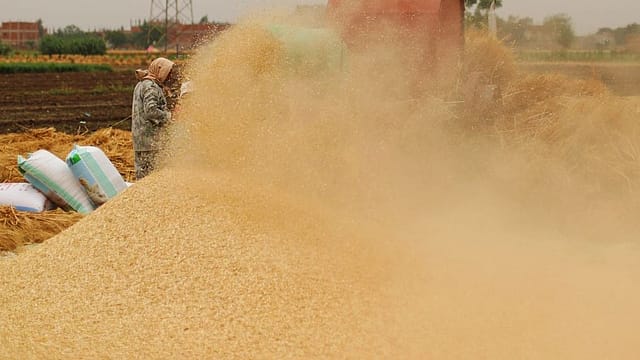Agri-commodity prices add to woes of consumer foods companies: Crisil
ADVERTISEMENT

Heightened volatility in the prices of key agricultural commodities will add to the agony of consumer foods manufacturers in India this fiscal, an analysis by Crisil Research shows.
Prices of several key commodities will increase this fiscal — those of wheat and maida by 7-8%, gram and gram flour by 6-8%, and milk and sugar by around 1% — while the prices of key oils will trend down on a high base, including palm and soy oil by 16-17% and sunflower oil by 10-12%, the rating agency says.
Last fiscal, the prices of wheat had risen 10%, maida 7%, gram 5%, gram flour 6%, milk 11%, sugar 5%, and palm oil by 38%.
"Considering the price trends, pressure on raw material cost is expected to be higher for key maida and wheat procurers such as manufacturers of biscuits and ready-to-eat foods this fiscal," says Pushan Sharma, director at Crisil Research.
On the other hand, for snack manufacturers, which have a higher exposure to besan and edible oil, raw material prices would increase only marginally despite a 6-8% rise in besan prices because edible oil prices are expected to log a sharp fall, Sharma adds.
Key consumers of milk and sugar, such as the ice-cream and chocolate industries, would see a marginal increase in raw material cost, Sharma says.
January 2026
Netflix, which has been in India for a decade, has successfully struck a balance between high-class premium content and pricing that attracts a range of customers. Find out how the U.S. streaming giant evolved in India, plus an exclusive interview with CEO Ted Sarandos. Also read about the Best Investments for 2026, and how rising growth and easing inflation will come in handy for finance minister Nirmala Sitharaman as she prepares Budget 2026.
To be sure, consumer foods companies have witnessed such volatility in commodity prices earlier, too. For instance, the prices of wheat and sugar declined 14% and 2% in fiscal 2021 as the pandemic gripped the country, but jumped 11% and 7%, respectively, in fiscal 2022 as the pandemic impact faded and demand from food processors picked up.
Since February 2022, when the Russia-Ukraine conflict began, these commodities have rallied 19% and 6%, respectively.
Edible oil prices jumped 35% in fiscal 2021 and a further 40% in fiscal 2022 due to the pandemic and lower supply from top oil-producing countries such as South America, Brazil and Malaysia, and have climbed a further 40% since the onset of the war.
A Crisil Research analysis on prices of palm oil, gram, and wheat over the past 20 years indicates two major trends — a structural increase and extreme volatility.
The structural rise has led to an increased share of raw material cost in companies’ total revenue. Raw material cost, which accounted for 47% of the total revenue in fiscal 2001, shot up to 69% in fiscal 2021 for our sample set of 62 companies in edible oil, biscuits, snacks, chocolates and ready meal manufacturing.
As for volatility, the coefficient of variation for prices of palm oil, wheat and Bengal gram increased to 8-13% in fiscal 2022 from 4-8% in fiscal 2002.
Two key reasons for increased volatility in agri-commodity prices are changing climatic conditions and increased geopolitical risk.
With about 50% of Indian agricultural land dependent on rainfall for irrigation, a fluctuation in rainfall affects yields to a great extent. An increase in the number of cyclones and heat waves is affecting agricultural productivity, too.
International trade in commodities such as edible oil and maize, on the other hand, has been impacted by heightened geopolitical tensions.
